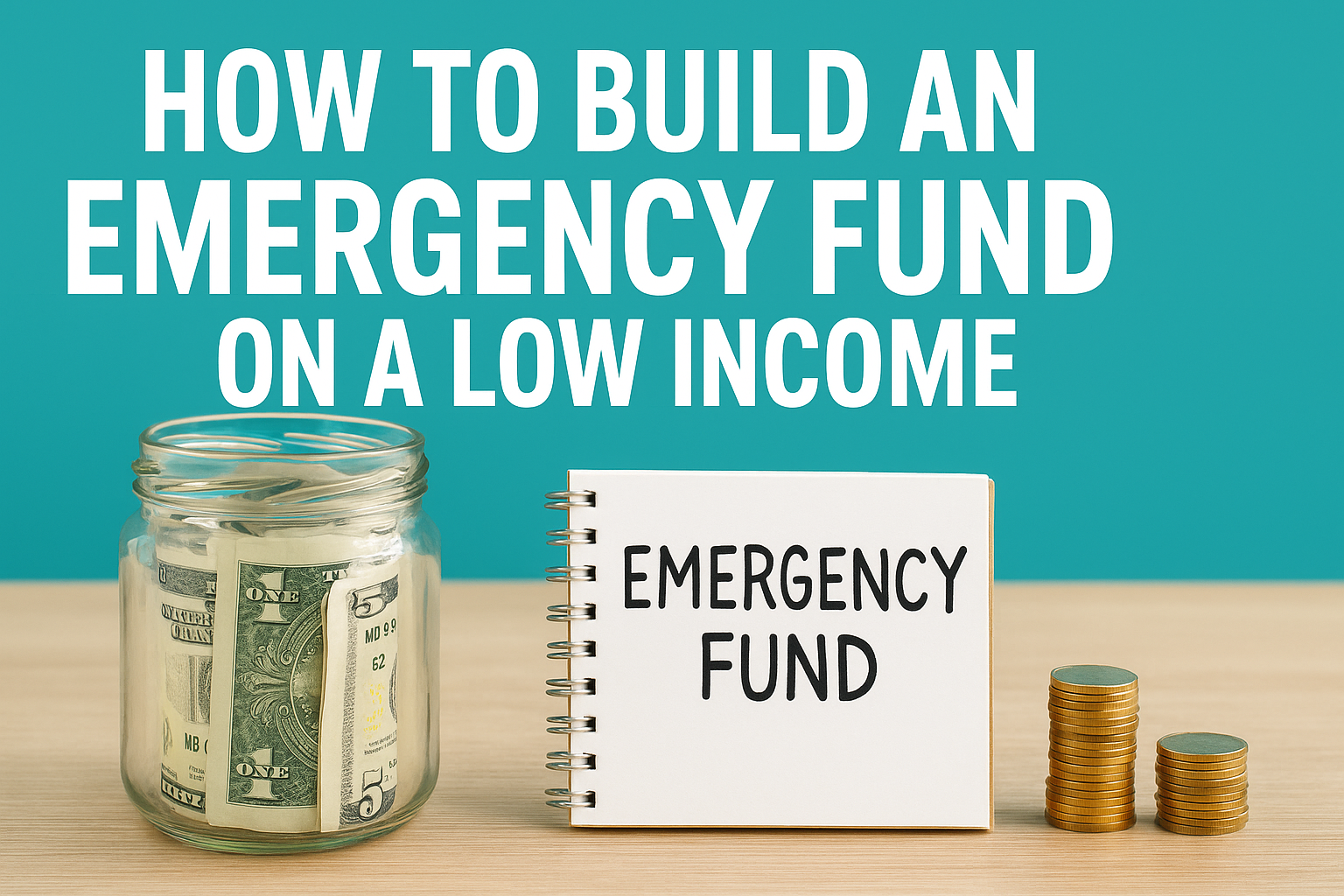In today’s unpredictable world, building an emergency fund may seem like a daunting task, especially for those living on a tight budget. However, it’s absolutely possible to create a financial safety net without compromising your lifestyle. This article unveils smart strategies that empower you to save effectively, even with limited income. Discover practical tips that enable you to prioritize savings while still enjoying the little pleasures in life. From simple budgeting techniques to creative ways of cutting costs, we’ll explore how small changes can lead to significant progress. Your financial security doesn’t have to come at the expense of your quality of life—join us as we embark on the journey to financial resilience!
Understanding the Importance of an Emergency Fund
An emergency fund is a financial safety net designed to cover unexpected expenses. These unforeseen costs could range from medical emergencies and car repairs to sudden job loss. Having a dedicated emergency fund ensures that you are prepared for life’s uncertainties without having to rely on credit cards or loans, which can lead to debt accumulation. This financial cushion provides peace of mind and stability, enabling you to handle crises with confidence and without undue stress.
Moreover, an emergency fund allows you to maintain your financial independence. When unexpected expenses arise, having savings to fall back on means you won’t have to borrow money from family or friends, which can strain relationships. Additionally, it helps avoid the high-interest rates associated with personal loans and credit card debt. By having a reserve of funds, you can weather financial storms and recover more quickly, maintaining your overall financial health.
In essence, an emergency fund is not just about financial security; it’s about preserving your quality of life. It allows you to address emergencies without disrupting your daily routine or lowering your standard of living. Establishing an emergency fund is a proactive step towards financial resilience, ensuring that you can continue to enjoy life’s pleasures even when unexpected expenses occur.
Assessing Your Financial Situation
Before you start building an emergency fund, it’s crucial to assess your current financial situation. Begin by reviewing your income and expenses to understand where your money is going each month. Track your spending for a few months to get a clear picture of your financial habits. This exercise will help you identify areas where you can cut back and allocate more funds towards your emergency savings.
Next, take stock of your existing savings and debts. Calculate your total savings, including any retirement accounts or investment portfolios, and compare it to your outstanding debts. Understanding your net worth will give you a better idea of your financial health and help you make informed decisions about your savings strategy. If you have high-interest debt, such as credit card balances, consider prioritizing debt repayment while still setting aside a small amount for your emergency fund.
Additionally, consider your financial goals and priorities. Determine how much you need in your emergency fund based on your lifestyle and potential risks. Financial experts often recommend saving three to six months’ worth of living expenses, but you can adjust this amount based on your unique circumstances. By assessing your financial situation thoroughly, you can create a realistic and effective plan for building your emergency fund.
Setting Realistic Savings Goals
Once you have a clear understanding of your financial situation, it’s time to set realistic savings goals. Start by determining the total amount you want to save for your emergency fund. This amount should cover essential expenses such as rent or mortgage, utilities, groceries, transportation, and healthcare for a specified period, typically three to six months.
Break down your total savings goal into smaller, manageable milestones. For example, if your goal is to save $3,000, you could aim to save $500 every month for six months. Setting smaller, achievable targets makes the process less overwhelming and provides a sense of accomplishment as you reach each milestone. Celebrate your progress along the way to stay motivated and committed to your savings plan.
Additionally, consider setting a timeline for achieving your savings goals. Having a clear deadline will help you stay focused and disciplined. However, be flexible and adjust your timeline if needed. Life is unpredictable, and unexpected expenses may arise, so it’s important to remain adaptable. By setting realistic and attainable savings goals, you create a clear roadmap for building your emergency fund without sacrificing your lifestyle.
Smart Budgeting Techniques for Low-Income Earners
Budgeting is a fundamental tool for managing your finances and building an emergency fund, especially on a low income. Start by creating a detailed budget that outlines your monthly income and expenses. Categorize your expenses into fixed costs (e.g., rent, utilities) and variable costs (e.g., groceries, entertainment). This will help you identify areas where you can cut back and allocate more money towards savings.
One effective budgeting technique is the 50/30/20 rule. Allocate 50% of your income to essential expenses, such as housing and groceries, 30% to discretionary spending, such as dining out and entertainment, and 20% to savings and debt repayment. Adjust these percentages based on your financial situation and goals. For example, if you have high-interest debt, you may want to allocate more than 20% towards debt repayment.
Another useful strategy is zero-based budgeting. With this approach, you assign every dollar of your income to a specific category, ensuring that your income minus expenses equals zero. This method forces you to account for every dollar and helps prevent overspending. By meticulously tracking your spending and adjusting your budget as needed, you can free up more money for your emergency fund without compromising your lifestyle.
Creative Ways to Cut Expenses Without Sacrificing Lifestyle
Cutting expenses doesn’t have to mean sacrificing your quality of life. There are many creative ways to save money while still enjoying the things you love. Start by evaluating your discretionary spending and identifying areas where you can make small adjustments. For example, if you enjoy dining out, consider limiting restaurant visits to once a week and cooking more meals at home. You can also explore affordable recipes and meal prep ideas to save on groceries.
Another way to cut costs is by taking advantage of free or low-cost entertainment options. Instead of paying for expensive movie tickets or concerts, look for community events, free outdoor activities, or streaming services with a lower subscription fee. Many cities offer free cultural events, parks, and recreational activities that you can enjoy without breaking the bank.
Additionally, consider negotiating your bills and expenses. Contact your service providers to see if you can get a better rate on your internet, phone, or insurance plans. Many companies offer discounts or promotions that you can take advantage of. By being proactive and exploring cost-saving opportunities, you can reduce your expenses and allocate more funds towards your emergency savings without compromising your lifestyle.
Finding Additional Income Streams
In addition to cutting expenses, finding additional income streams can significantly boost your emergency fund. Explore side hustles or part-time jobs that align with your skills and interests. For example, if you have a talent for writing, consider freelance writing or blogging. If you enjoy driving, you could become a rideshare driver or deliver groceries. There are numerous gig economy opportunities that offer flexible hours and extra income.
Another option is to monetize your hobbies or talents. If you have a knack for crafting, baking, or photography, consider selling your creations online or at local markets. Platforms like Etsy, eBay, or social media can help you reach potential customers and generate additional income. Turning your passion into a side business can be both rewarding and profitable.
Additionally, consider passive income opportunities, such as investing in dividend-paying stocks, rental properties, or peer-to-peer lending. While these options may require an initial investment, they can provide a steady stream of income over time. By diversifying your income sources, you can accelerate your savings and build your emergency fund more quickly.
Automating Your Savings: Tools and Apps
Automating your savings is a powerful strategy to ensure consistent contributions to your emergency fund. By setting up automatic transfers from your checking account to your savings account, you can make saving a seamless part of your routine. Many banks and financial institutions offer automatic transfer services that allow you to schedule regular deposits based on your payday or preferred frequency.
There are also numerous financial apps and tools designed to help you automate your savings effortlessly. Apps like Digit, Qapital, and Chime analyze your spending habits and automatically transfer small amounts of money to your savings account. Some apps round up your purchases to the nearest dollar and save the spare change, while others set aside a fixed percentage of your income. These micro-savings can add up over time and significantly boost your emergency fund.
Additionally, consider setting up direct deposit for any additional income streams, such as freelance work or side hustles. Directly depositing a portion of your earnings into your savings account ensures that you prioritize saving before spending. By leveraging automation tools and apps, you can make saving a consistent and effortless habit, helping you reach your emergency fund goals faster.
Tips for Staying Motivated on Your Savings Journey
Staying motivated on your savings journey can be challenging, especially when you’re on a low income. One effective way to stay motivated is by visualizing your progress. Create a savings tracker or use a savings app that allows you to see your progress in real-time. Celebrate each milestone you reach, no matter how small, and reward yourself with a treat or a small indulgence. This positive reinforcement will keep you motivated and committed to your savings goals.
Another tip is to surround yourself with a supportive community. Share your savings goals with friends or family members who can offer encouragement and hold you accountable. Join online forums or social media groups focused on personal finance and savings. Engaging with others who share similar goals can provide inspiration, motivation, and valuable tips.
Additionally, keep your long-term goals in mind. Remind yourself of the peace of mind and financial security that an emergency fund will provide. Visualize how having an emergency fund will enable you to handle unexpected expenses without stress or debt. By focusing on the benefits and maintaining a positive mindset, you can stay motivated and disciplined on your savings journey.
Common Pitfalls to Avoid When Saving
While building an emergency fund, it’s important to be aware of common pitfalls that can derail your progress. One common mistake is setting unrealistic savings goals. If your goals are too ambitious, you may become discouraged and give up. Instead, set achievable milestones and adjust your goals as needed based on your financial situation.
Another pitfall is not tracking your spending. Without a clear understanding of where your money is going, it’s easy to overspend and neglect your savings. Regularly review your budget and expenses to ensure you stay on track. Use budgeting apps or spreadsheets to monitor your spending and identify areas where you can cut back.
Additionally, avoid dipping into your emergency fund for non-emergency expenses. It’s important to establish clear guidelines for what constitutes an emergency and resist the temptation to use your savings for discretionary spending. Consider setting up a separate savings account for non-emergency goals, such as vacations or large purchases, to avoid depleting your emergency fund.
Conclusion: Building a Secure Financial Future
Building an emergency fund on a low income is not only possible but also essential for financial security and peace of mind. By understanding the importance of an emergency fund, assessing your financial situation, setting realistic savings goals, and implementing smart budgeting techniques, you can create a solid foundation for your emergency savings.
Explore creative ways to cut expenses without sacrificing your lifestyle and find additional income streams to boost your savings. Automating your savings with tools and apps can make the process effortless and consistent. Stay motivated by visualizing your progress, surrounding yourself with a supportive community, and keeping your long-term goals in mind.
Avoid common pitfalls such as setting unrealistic goals, not tracking your spending, and dipping into your emergency fund for non-emergencies. By taking proactive steps and remaining disciplined, you can build a robust emergency fund that provides financial resilience and allows you to enjoy life’s pleasures without compromising your quality of life. Embrace these smart strategies and embark on the journey to financial resilience and a secure financial future.





